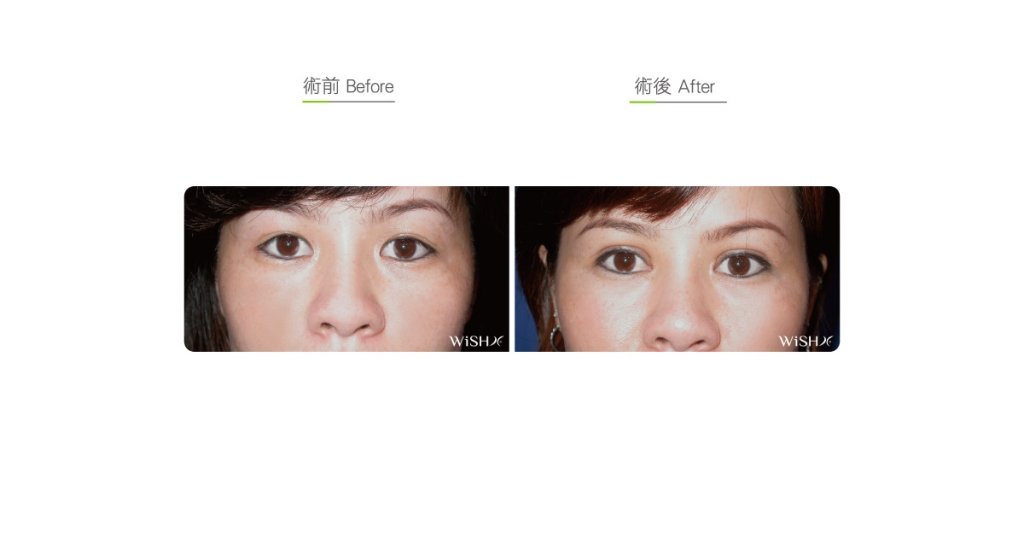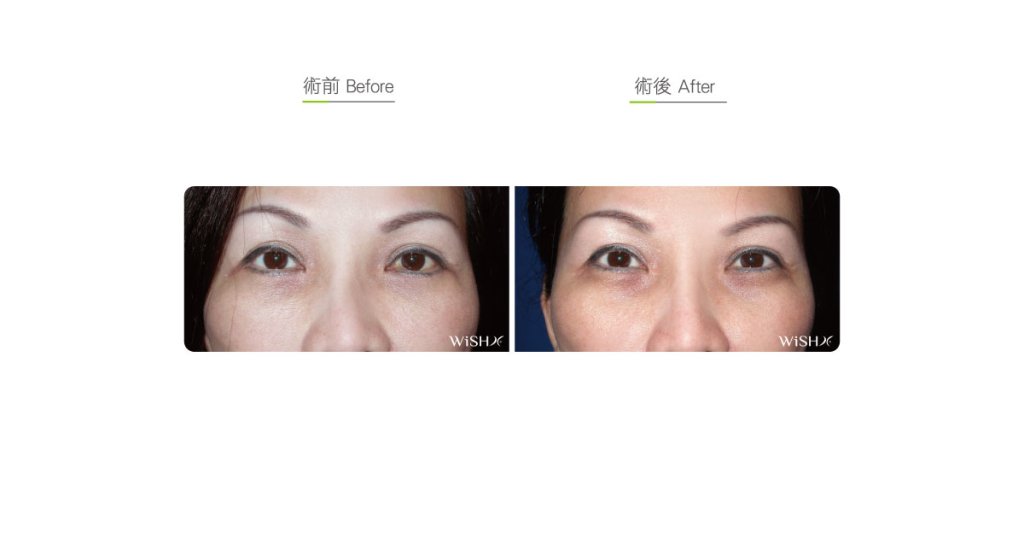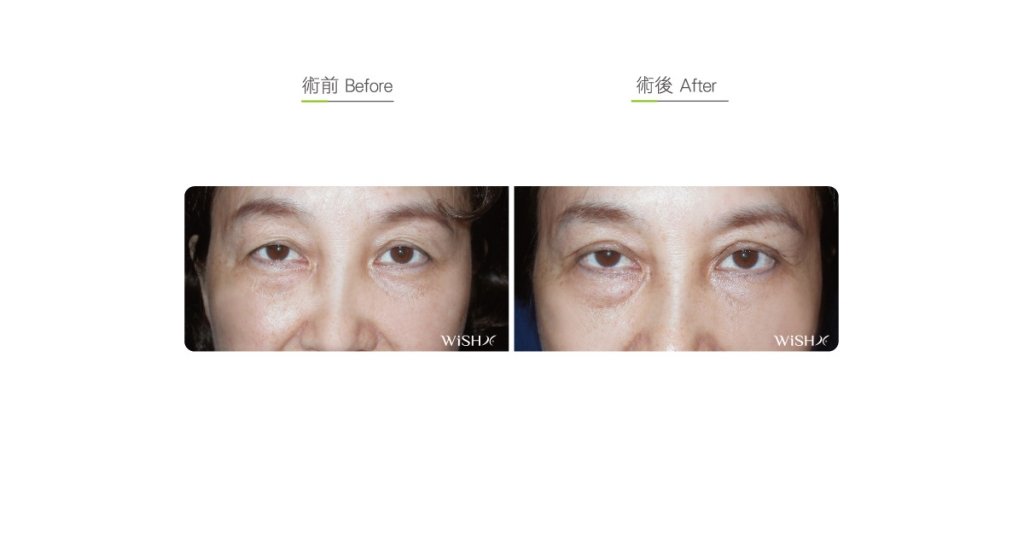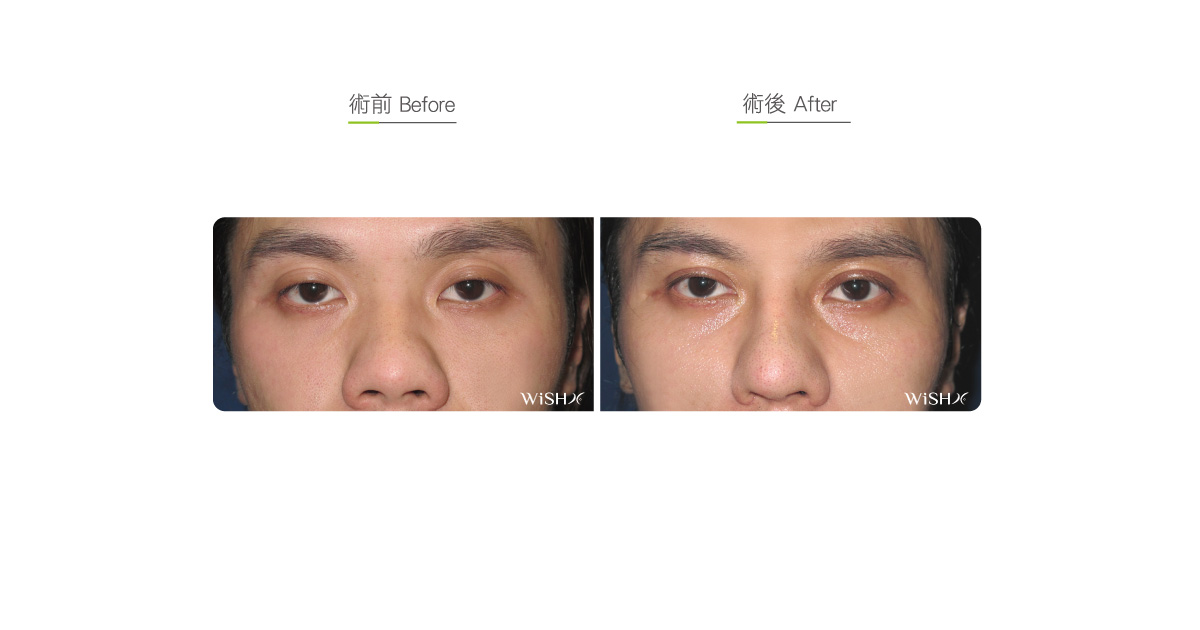Free Fat Graft
Different from a fat injection in both surgical technique and concept, a free fat graft uses fresh intact fat particles rather than liposuction cells, which are emplaced at multiple layers in the deep ocular depression site. Because the filling position is accurately controlled to avoid future fat displacementlocation, the physician needs to create an incision of approximately 1.5 cm at the upper eyelid, so it is generally conducted in conjunction with double eyelid surgery. Because fat particles used in autologous fat filling grafting are more intact than those in the fat injection, the overall viability rate is improved to above 60%. Besides, as each cell is examined under the naked eye by the physician for the internal structure before accurate filling, almost no fat lumps or unevenness and other rare complications are left after the operation. Fats are commonly harvested from the abdomen as the wound will be hidden near the umbilicus, leaving almost no scars. Likewise, a free fat graft is also used for the filling of the depression at the eye pouch and tear-through lacrimal grooves, which predominantly achieves prolonged and stable results.
Surgical conditions
Duration
- Type of anesthesia: IV sedation + local anesthesia
- Surgical incision: An Aapproximately 1.5-cm incision at the upper eyelid
At the umbilicus (incision for the collection of fats) - Recovery: 7–10 days
- Removal of stitches: 7 days
General instructions
No food and water on the day of surgery
- Abstain from ice and warm compresses for 1 month postoperatively.
- Avoid smoking, and alcohol, and ocular compression, and massage for 3 months postoperatively.
- Avoid hot springs, saunas, baking ovens, and other overheated environments for 6 months postoperatively.
Ideal candidates
- Patients undergoing double eyelid surgery and who need to correct ocular socket depression
- Those with ocular socket depression who are at an advanced age or have eyelid skin laxity
- Those with too thin eyelids and are unsuitable for direct fat injection
- Those with severe ocular socket depression that requires the filling of abundant fats
- Those who underwent have undergone fat injection correction and whose results were are insignificant
Potential complications
- Temporary mass
- Eyelid unevenness
- Eye fold asymmetry
- Self-absorption of fats
Surgical advantages
-
It improves ocular socket depression in conjunction with double eyelid surgery.
-
It is less likely to incur fat lumps or unevenness.
-
The fat self-absorption degree rate is relatively low.
Surgical drawbacks
-
An incision needs to be made at the eyelids, which may leave scars.
-
Premature or total fat absorption may still occur.
-
It may need a relatively long recovery time if conducted in conjunction with double eyelid surgery.
Possible procedures in conjunction
Comparison of sunken eyelid corrections
| Fat injection | Fat grafting | |
|---|---|---|
| Ideal candidates | Patients without eyelid laxity | Patients with eyelid laxity who also need to undergo double eyelid surgery |
| Surgical incision | A needle hole at the respective lateral side of the eyelid | An incision of approximately 1.5 cm on the eyelid (determined in light of double eyelid surgery) |
| Surgical duration | Short (approximately 40 min) | Relatively long (approximately 1.5 h) |
| Scar | No | Probable |
| Fat masses | Probable | Few |
| Fat viability | Relatively low (approximately 50%) | Relatively high (>60%) |
| Incision for fat collection | Umbilicus (approximately 0.5 cm) | Umbilicus (approximately 1 cm) |




